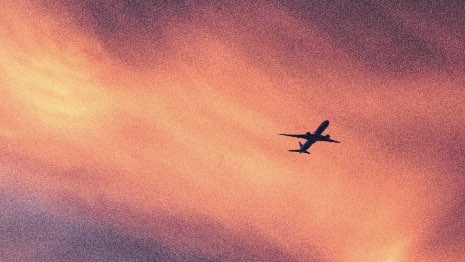By Jonathan Cohen
With the experience market booming, the travel industry is growing at an unparalleled rate. This, in turn, has led to the re-emergence of the ultimate status symbol: luxury luggage.
Travel continues to be a significant growth category.
In the bag
Buoyed by younger consumers eager to experience the world, more plentiful, affordable transportation and accommodation options available at steep discounts at last-minute via mobile, and the rise of “bleisure,” – intermingling business and leisure travel – the industry’s statistics are impressive.
According to the World Tourism Organization, the number of international arrivals increased from 897 million in 2009 to 1.341 billion in 2017, with travel research firm Skift forecasting international arrivals increasing to 1.6 billion in 2020.
Alongside this rise of travel and tourism has been an increased interest in associated products, namely, luggage, bags and clothing designed not only to function well under the rigors of modern travel, but to showcase their owners’ taste and status.
Well-designed, aspirational luggage is not new.
Storied brands such as Louis Vuitton, Goyard and Rimowa originated more than a century ago, but in addition to those classic brands’ continued growth, a newer crop of brands and products have captured the attention, wallets and Instagram feeds of younger consumers eager to travel well and look the part, with Los Angeles-brand Away perhaps being the most visible success story.
Having sold a purported 500,000 suitcases and achieving profitability, the self-described “travel lifestyle” brand recently secured $50 million in additional funding.
Going the distance
Within this market, a particular growth opportunity inside this on-the-move sector appears to be millennial and Gen Z men, and a range of brands, both classic and new, are offering travel-related products in categories that were either previously unremarkable and commoditized or outright derided.
What is clear is men now have more style-oriented options in travel apparel and accessories. This began with the ascendance of better-designed backpacks from a diverse array of brands such as Louis Vuitton, Dior Men, Porter-Yoshida, North Face Purple Label, Topo Designs, Supreme, Sandqvist, Rains and Noah, but has extended beyond that narrow category.
In perhaps a harbinger of things to come, a recently founded Los Angeles-based luxury sportswear brand, Oyster Holdings, is “designed with the modern traveler in mind.” Its Web site address alludes to its inspiration and ambition, which is also a trademarked tagline: “Traveling Is a Sport,” and a recent collaboration with adidas helped spread the word and its apparel at a more accessible price.
It is worth noting that luxury-priced Oyster thus far has focused on sweats, shirts, shorts and socks, but presumably bags are en route.
THE MOST INTERESTING aspect of travel-related goods trend is that as with its earliest antecedents, namely French luxury brands that began with luggage a century ago, it has quickly crossed borders and come to represent a modern travel zeitgeist beyond actually traveling, stimulated by an endless stream of social media images.
Whether jet-setting abroad or simply walking down the street, these younger generations want to show both where they have been and that they are, literally and figuratively, “going places.” It is a mindset and a lifestyle as much as an actuality, perhaps more so.
We should expect to see continued growth in new products and services that play to these aspirations, interests and passions, which appear to be as-yet unbounded.
From The Wednesday Report, Summer 2019, produced by the Wednesday Agency Group.
Jonathan Cohen is head of strategy at Wednesday Agency, New York. Reach him at [email protected].
{"ct":"pTmywkgat\/OXiqBA+WuvzK5jogAu24h+twRtIgdFwbvWJY2zLILqyJiPdcgEKRfg3WANMYPl3\/19XYz9qlmZUe2LPPSPRcakHdGmZd58pQXn9CUfLJBjNn7YXM8I6Q6+H\/j1DVwbFhZwXMtoRQrFdKB8pdS2h94V9tT72GP1nZIH0Eswgc6mkUP5ZxaMJpGVNWpSmkfRzFuYc4xmGShchE+07TmQUrZmgz+on4yP0FKh4b5vRugKkFVRXz2gk8uqvryfa4F9YkN4jY2yuFi9r\/K5+ThhYEQss34+qSJDum3gdn5R4YYkhEyFP+tN8DI9AZrjMN53uAaBFMQgPhmLEOsV66dqZ08Vd85BnhBsTvMG8FcTIlVngc2syuQbsbzbD7wC68qDiUbqPDjSeI48pZE5EieQJOnhp4x9VeitwlBoWfNC0j6GEkZStbKd7pHxOQqv19N1mN83BiZ0XZYTAWa4lREL+VXO4gRmkrs9Ysh\/TFtjU5SdEKjfZt83lfC1095bRTamuT1yWR7yatsqFkUN79mqUUHQTbadGcFAU1P51+FJ1vxlvyTt5ED1KPb38fjA+644WdLv5cUr0rqTt7boBgRl93YI+hopwOYLDNpjUxEgnd\/KHGc+rVpnTcZLoa4rbfw1Aye410mJota667+cOw06ULXkWviSEnPAuM1y8tGE\/1QGF1rcj+g1hY2DHXK++vbcvhv4Tif9WRqMhO32DfW+eHZ1LIPKi1tD\/Wp46GNUMMTsIc4+z\/TMTEyPxK\/A\/Pgs7IhGqD2d6WACzIdNbgZNfSMq39VqAL4VlmtvAnLw3c1j86IPJGemG9e7C84Y30cPWflfq0Hn0EcVRixzkao\/MEY3FVn0\/93gfq1p2\/+yvtqUVsyHrWlyX1nmfwmpLTwunvx2Pt6KDOxnjnQeqKZ5ptegQrKKpezVjYTFRQwTME13Qklk1GHvQrO9SFG4LXpQhQUzTsKRBAOrCgHXp7bs6aYKII1OQJSrtmLvp+peiCrxdRcPjkSs+FYYReap4fES2DV83rkdx7nRM+F9lk6x6HNpBV63VGhVZqFBZhZllacjmOdhGxaJoqvTbQj4Crmd5aeBvIzOGloRElSpVhB3eMgdZ9uY1aYnyM8hm8A0yt18w4soQceKKfp9jEeRDDqPcWx963kRruCNpfRj908\/1cXkjfxkbxnAhJLWs2eQjZWwbf0enWSNnfXFRUSX+coTiNByHJWm8YTF6NmqfbgzJd7ucsS9RjcvWhWnbXnaxo3Iu2q7zGTJ2joYJwBzV8+2xm89dRBJ+Znk2u8k6UzTTye9\/mrudlo2cibQBpMvNYhgInmxFeQfS+dPJI3okxigCNMFTUP8H6clULH3NM75uuD0JlJo3\/AHrlTAWw2Xb2YMsyPsf93hYOmM5V8Jin2\/y8WAVOnQ4HvU7JfjpHGbS3dbgQ7oIwIMqMAsDpFWLvrkcbJvfY6DS61\/BW8pgXxjVYj2BGlcphuTtaOAaDCgySh2lAu6wpkzxsJP\/ewMcO3TtZQ3IceBfmatu1LkaWDWsFGGJg1HNYd4zlvZdaCrmn6YS24ut8uHOHCYqH\/lo6k2GlHjJzHT\/6u8w7GMlDZd1BrJkdXDltCQYYMJM4KftQgNTLD+6ltqateVTUQxeAU\/N34ps1NAYgubUoqIp2RkO7O60HbEWAzvnm2+7ON\/pHgzzYoMcER7wSZfocQIug3rrcEO8W9e9YWrwhUoRxpR\/NFcXDerxesuClMUT7OGwigPpL+KRDDdIn3QTAduXgPvJE1eUJ7r1SMDbsFyg0I0NqY5hWtxNK1+3dWdoWvFRMpGbC5GV+kxBOodqZsqPJhwFhhUqEmUaACW4INacXmZL68eDezYno+k\/Co+weWdJQ1IQdLuV0cZCCW+T2Wx3J3oTZ\/6o+N1NNYOFVTroxAVfX9VKmYMqgclqMeCOqCV4izaI3e71hb+Q2Tsd2tXjZpr04DpdwZbGSY4Rqg8jbwl1UBF+Z1Qz+79wC6Rz1fX7JROv3kPkZYXjbDvC5bOYGTC9354+8I1YVS\/86uGpJ5K80JkhO4XpFdYYszZBy4xVNQQDMBv6sSwX1eirM\/6HzmmCJbLSyZ\/eI\/oRjm2bFI1rrGV6g7+x1ED53gWOjwWTmSTbdxHJ1Q5wJk\/boGdH9OEAm+HAy1C2DoUU2+\/tNXb0sG72Zw6zny6fj9dKJD14L1FUbPq1DWfVByBPvCLhmuYxOqT7MeV3bbSW9wZJxfH5XPw5ftJTUyICI68RvuLs7fvfqxEhITNRDxagl2hXJvvbOdJbD+Wru6g2o8dXwnCMvsoRLnYC6sW1VtEUZIg3rFOPYbiYQAMK4xyi3Q3CorHPN4vi667DlFZqHJB81bQPN+v61q1B0Oo4btZlNmB8t6w6hyxTrMiQF1q9C4xN1gSALpWZz3YLo7I4q\/XmLUaEMwd3cVrjsSf14Bz2lTbqDsJDIKh0tBEpfu5MZmuJtg2cumLPfy\/P98HuSZC1NjVuYe0xbOpmnRPUskiMNUYpf21juv6B90K4eQ2Av7fJg3U7U\/ZY89uivJ50G4sULYnhM6iJny4Nv0WekjYSbTX50HMftm95jQ4yo0sShu08SVP+8tyfQZqqOYEPNkISDhipdy8O3lio+H8RmaJ0fUFg5l4b5CEluwk5ktnw2Me0xEzpXOhf8oc8+SJ4vzBLzzCwzIfItYwcSqdljXmxH4b5XlqH5PDh9V92NAOdUEj7A\/XKUc2LSGVy61PNhUKg6ICDOlhh3uy8n0vMpxNoKz7STEZWO2IGBG91Ko6Y\/QGOXCZbJ6je2z5DI5vTYVFkM7xN\/8s6JhD9K6vNnzSGgA5qfNbluu+FCWhIiZwTtrAy9DgTRy2tUChwBIJZRBKfsETnpK0iFbklgGv7oSXUNjE4LKDFTj1RXaVTJpPUp\/NFvFJNXSG71ep0qgVX5AgJDvpn60Gau0efDXWor58yHyxjOkR9t6OQSRxdgdP7YoCQMcmZViTDor9DrTb8+6Jnb16O0\/mgSiw\/mZwV4DN1t2iN0OftkjB9WJ+d\/fL8cfPgUefDQoQ2xtaRu7EnG5g+dCOt8c+pSdxn+MMU3J9LklViPrMlWqOpXaCuMo489Pu5TZfCxGvoprcBD04CaWRA7cKMbxveYqH0ltxEC71KTYFD1OCZjWTtXor1mPjZHYMgDudmsoEhwl8RAFjwPhxndOQt\/U49hGW1qNv4a2SIwh1Rngp8zawNYFqlZl1dp0zxzbpdNKgWphLz7iBYMX9zrpO\/YxUqkNAmxlmJZp8GbLdqMaMBxFV8Sx1csjn4CwlWPaAypaJFqWPDTEZ+I38e85FVlun+atTvWsPnCwVc\/VtggwmJUfNZdP2F6n3GRWxSgnpRMEpely+9KSxKE0J81egrsAB0eYYf+nyJC1Vxmtg1\/UpfMu\/s13FHMRyCax6Wurc366sCcjTAMPwiE37RuvVreSiv7MAfdTQf4ZG\/HlJ2n1GPexR8tBt+oMpcsl1OIOPBkxsZdPaoKp60lPBQlWBVX7hMsRkWUv\/CPyitkHhUB9WZGMediP\/t9VnOaSeUQUclH8O91DSCowtKuPtvFSg45DQAgGAMBdtIZxryDUxu2B7TIBO+Icy1OweQW7zWSBo2Egi5jwYg119BRkFzjegx6PpeiryDJMHGuawbgwC2bu\/KS7e+amLbHKhkxsYPyJuAfgWzuVP8MXVCgm3r8MxkuWiN7k5VhFRhSfdrCR5QHc5YnbspesVC0+CT33YH\/jDnWIHy3osBZCH4nVTU\/JUJ3vE3vSJ5X6LO3dmwnevl+kwUQyus\/rrScxOrIk5GRTsqMJHHLdydvIIKOlvOHr1usp\/3DRHlb4xEp7RscG2luHfeWFOQtLsi0K0VC0PO0hC2PEFAGZPbZJ5eLcIheGvUv\/hczZ3e5q+heUOsTdv3neJusZgvIwot05GEW7F+0AAt5dvnczb3D9BEJYyWmyC67gHIcH42uZKv49KCV+FD9WBRiB\/bETNijVK54pPVG+Ng\/IsnhcVqz7KBmNca4+fAEBvwELHBp16gZ1KFMqnvexs4hKlqo1hUzv2G9eBehZ9wCVxsbKOZpztyyj+BS\/PjcLRpUW3RPRDjBeLQYjTYevKnpUhyTfqx0WC5Mcrc6BnJKTtFd4zRR8nmDQCxAtJ2e7Fllcw9GG4AfkrY6E15aWAEy3e9oSVTR3hE28Pjemv5xcOc9FDCajmL7Gup40TkA4UqYZw0TqzAm51EvKrgWAsyzyBSwCZCN5Kpo30153i2rMBa7O60HuTp16z2Ti3S359SdNau4q5L2SsIfmnMoTpNI2g6KKHNvN7K32nm\/TxgMEvSXN\/hLKIRl7fRGjXzteCI7jKwyT1\/8aOedD00l2Yxq534RfgoCy\/8SK\/KQzM06Cdu6aysPqQquU4kxKv13CqHG6CbFl3tLnnUHXyAeuD5NVrgEY7UrpOpvm88kyphEr73OyjsLMz3TzCaxHCmN+dQ21jZF18dHHwRphf6oP0P0FePBR6ilda41lEJRn71yGs17QKZXM+LNyFQwZ1iJp45unViR8xRUulVLLMpPMr8hwgJuO2gEoZlNtI1Z4SqG9noLEccIRd\/X3YxU4mer9vl+vXxNtdHqwRoLWyHV7I1zZoGkFapGadYY62o6yzKoivUc9xEUt+JJ\/xGqn2Y8oEBdjc4p6WewswiP8zvZic4tqIrOT\/jCI91a85saD0Svq8zTI5gFOVPbRdAwIPxd2ghyoV2oaOsmwf3oesmiWBhqsApEuaTyg36jMk40I93B7OBBiwSbOJWoU0J2JLeMohjZqBoIlqmitx37RHKL4m9+Y\/a7WuGOTXHo6GmY9hvLFTnz+89faaK52ozcQpZQiV7T0qY\/5YE2B1XW77qIUMcdILUQ832F1s1KfX9HXQorhtv4ryhU6uXJKU0q53PL3o5OdBudR8khfcaCqSrjePk08\/SnOCOqFMHh6K+UCKuSVg5hS+0a+J+sk2agqHkNkPgCZit0Cze2PL4is3OCRXCGy4aahOOg4FblsF9IN3AeHiyJGVQ0l4HtbUHTv5lL2U\/QWh\/2Xs+wg5YynT9b59swdvyghR9FT5pl36hPHTNnlW3mjShM2wLDpMQLjLkaTjG3YJcyKOvxFsaPvVG1bmBwztYhxSY0bQ3cepmUJG28qc91\/ghZM\/p2dFx9TTMEYUwkfrFDNreNEhCZSHdNfe+LDL9zKQ+BkDeXsaANv9YAqQgpDHDu2VIPHpTIS12s3Pd+uvpTr8EyZ8hevYTCKR7cxUHnErnVt\/KZFrZtTuNrt3n6JfKGuJutIgM9ilAyA1yZvyrT\/g0iLkKbe7DqJk5ObM6Q7tzeZfGbc\/9o\/eFvbk34QFvyiE4q\/tu6rdPu7arwxykhQbtHkvCsX4WpNgHc\/gIKZTStN1LCsfte2N9WKiX+0Tq0aGLHtmMhtbmreEudebk\/yftLabC6vpNxF5pquNvsoXI+ErmTh16Wn4V2qvqssu04sh9S5GykYEguaBpkagTVXDZO\/CjYIrCcFJvPMPwVaFrfWJdH\/sTFuGQsr9RE+2zEFwEl\/ICK9+lemnrVMDnrMseYWWmsDk+BfcF+Mpx43OhOE79v4NqmjCdO3j2IJTdq8qOvexnS80MYpAd25Ldw79XFPfXWZR1AEt9bprgwBDZFh8ppGyYeQRCUxpnomcb7RdLrfzFnwD7i7MWui5WBQnGmez01MtTTUqiFsesnQOLuPRd8tb\/xg19gtzH9tgPeF1vJD1cdau5JI6G4S467nKeru6T7R9SrH7PBGGzN6Lsd231wxravxmGsN3MPg1iAG\/8XpOZZkFugqZyuZScAaWemIQ0xcY400e\/E3jpNq8yUrm0NOgJhSgcYjUgZZpqsZglgCWcxj94XVl51G3Cs18mw==","iv":"0f16b489a31c1c89bbd54d92ad2d5947","s":"3a6e387b22c4ebdc"}

 Luggage flies high again
Luggage flies high again